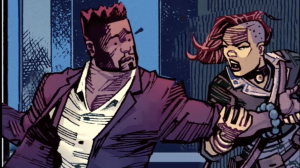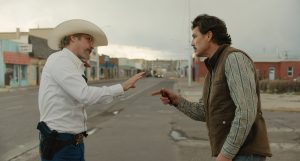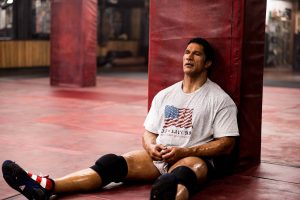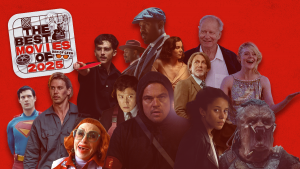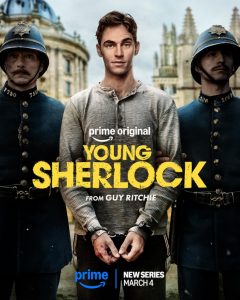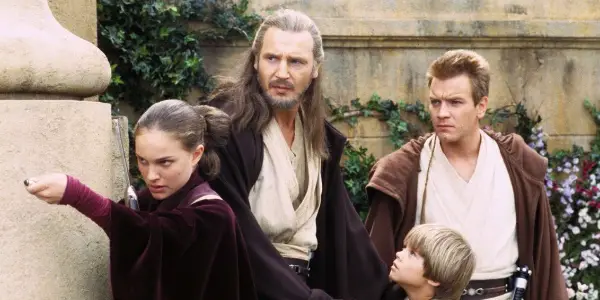
Warning: Spoilers Ahead!
Few movies have ever equaled the fervent amount of anticipation that greeted Star Wars: Episode I – The Phantom Menace in 1999. Even fewer have caused such polarization over the years, with many hating it, some liking it okay, and many viewers loving it. With the recent temporary re-release to honor its twenty-fifth anniversary, how does the film hold up?
The Story
source: Lucasfilm Ltd.
In case you’ve been under a rock for the last quarter of a century, the plot centers around Jedi master Qui-Gon Jinn (Oscar nominee Liam Neeson) and his Padawan Obi-Wan Kenobi (Ewan McGregor), who are selected by Padme Amidala (Natalie Portman) to create peace between the citizens of her planet Naboo, and the underwater Gungans. This is to hopefully win the fight against the Trade Federation, currently in the process of decimating and deforesting the Naboo environment as part of their effort to take over. When Qui-Gon and Obi-Wan wind up on Tatooine in a forced pit stop along their quest to settle the issue, they meet a young Anakin Skywalker (Jake Lloyd), who Qui-Gon realizes is unusually strong in the Force.
All the while, emperor Palpatine (Ian McDiarmid), publicly disguised as a senator seeking to aid the Republic, orchestrates all of this in the shadows, including the dispatch of his apprentice Darth Maul (voice by Peter Serafinowicz, physical performance by Ray Park), so as to ultimately help the long-dormant Sith rise to power again.
What Still Works About It
One of the unanimous praises of the picture for fans and critics has always been over its fantastic visual effects. Opting for a more computerized look this time around, writer/director George Lucas and his FX team, led by John Knoll, utilize the technology at their disposal to create a truly awe-inspiring world. From the vast landscape of Naboo, to the Gungan city, and the vast senate chambers, it looks like what you’re seeing is genuinely right there. I honestly feel like I’m in a galaxy that exists far, far away whenever I watch this film.
source: Lucasfilm Ltd.
In addition, the action holds up immensely. The pod-racing sequence, a long-time highlight for fans of the series, is absolutely adrenaline-pumping. The music, the sound design/mixing/editing, the cinematography. All of it coalesces into a sequence that was an absolute marvel for this lifelong Star Wars nut to witness on the big screen. And let’s not forget about that equally iconic lightsaber duel with Darth Maul. Not only do the effects hold up, but the choreography and stunt work far exceed that of the original trilogy- people are allowed to flip, jump, and contort in ways not done before- but my word, that MUSIC! Composer John Williams, a veteran of this series, pulls out all the stops in the now-immortal piece titled ‘Duel of the Fates’ (an apt title, to say the least). Safe to say, this is still some of the finest action in any Star Wars feature.
source: Lucasfilm Ltd.
I’ll also say that Lucas’s world building here is mostly stellar. For Palatine’s part, it is extremely clever to get the Senate bogged down in a trade war so he can set his actual plans into motion. On top of that, the Jedi are intriguingly portrayed as stone-cold, toxically masculine people with so much hubris, that they can’t even see how that plays a major part in their future downfall. This is something that I think makes the performances, attacked for years as being too wooden, quite suited for this prequel trilogy.
What Doesn’t Work
source: Lucasfilm Ltd.
This guy. While an exceptional visual effect, Jar Jar Binks is arguably one of the most hated characters in cinema history for good reason. While I don’t find him a racist stereotype of any kind (an accusation lobbed at Lucas upon the film’s release in ’99), he is woefully unfunny. With the exception of two chuckle-worthy moments, his slapstick and verbal gags just never get a laugh. I feel bad for actor Ahmed Best, who received much undeserved hate for his work. The idea of the character is okay. The physical performance is fantastic. But what he is given to do and say in the screenplay fails him at almost every turn. If, say, Lawrence Kasdan, who co-wrote The Empire Strikes Back and Return of the Jedi, had been hired to write the movie, the character could’ve worked.
I also loathe the concept of midichlorians, an idea which was thankfully left out of the sequel trilogy released by Disney years later. As much as I like this film, it just irks me to boil the Force, a principle that has left much food for spiritual thought over the years , down to a mere biological lottery win. Apparently, if you just have the right genes, you can become an all-powerful Jedi or Sith!
Closing Thoughts
While perhaps not the best entry in the saga, Star Wars: Episode I- The Phantom Menace is an undeniably fun film all the same. Even with its few shortcomings, there’s enough eye-popping, character-building, world-building, and sonic excitement that sitting in that auditorium, I couldn’t help but fall in love all over again. A quarter of a century later, the Force is still strong with this one.
Does content like this matter to you?
Become a Member and support film journalism. Unlock access to all of Film Inquiry`s great articles. Join a community of like-minded readers who are passionate about cinema – get access to our private members Network, give back to independent filmmakers, and more.


